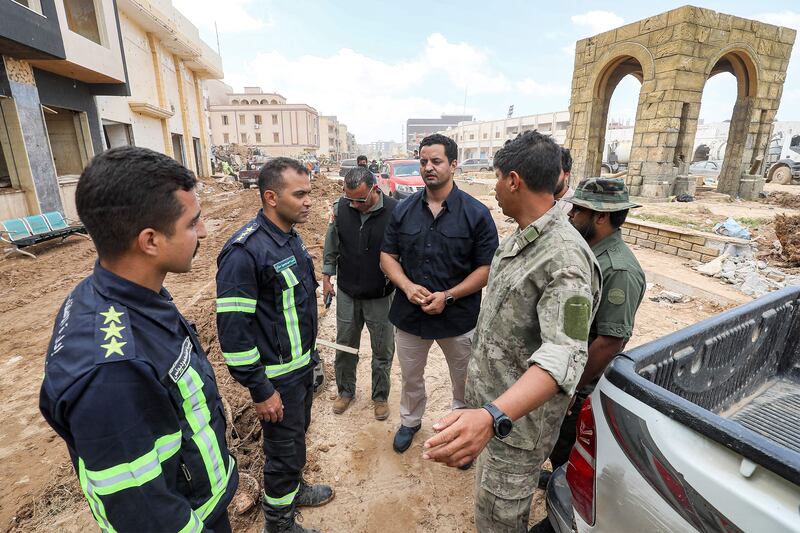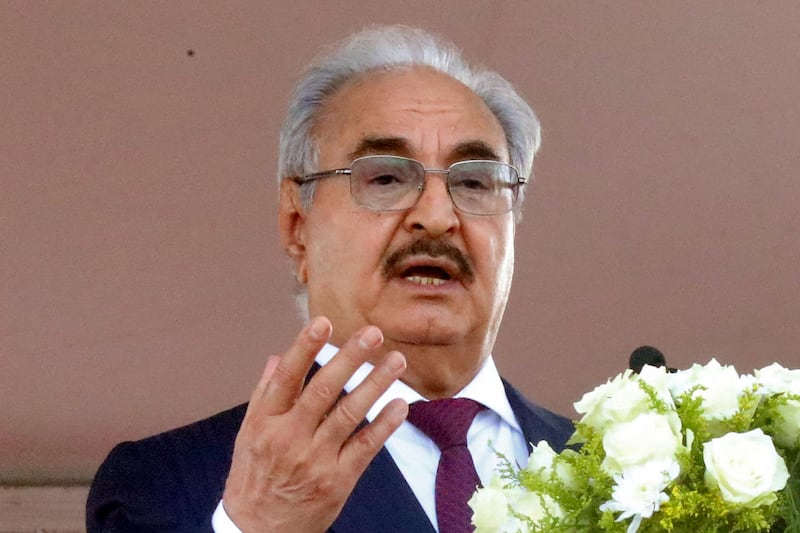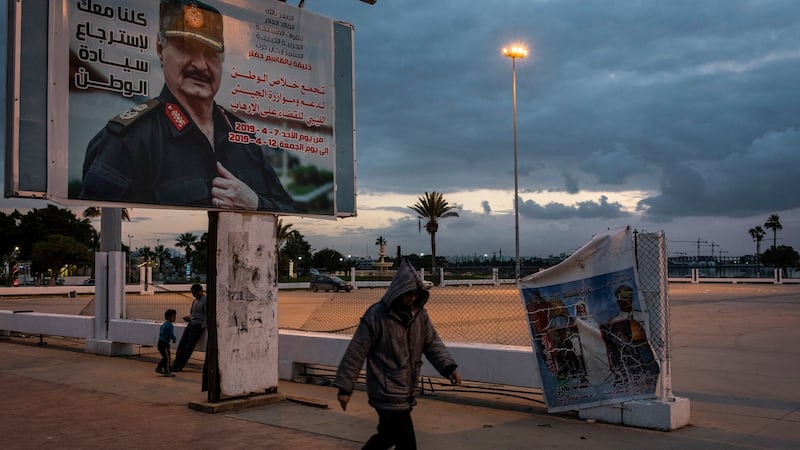Huge billboards in Benghazi leave little doubt about who is in charge. Across the capital of eastern Libya, the moustached face of Khalifa Haftar stares down sternly – his ubiquitous image an echo of Muammer Gaddafi’s dictatorship.
For nine years Haftar, a former CIA asset, and his self-styled Libyan National Army (LNA) have controlled eastern Libya, which is home to most of the fractured nation’s oil riches but has also endured some of its bloodiest conflicts since Gaddafi’s fall in 2011.
Now the region is reeling from devastating floods in the city of Derna that claimed at least 4,000 lives and washed away entire residential districts.
Many Libyans blame the local authorities for the scale of the catastrophe, which was amplified when two neglected dams in the hills above Derna collapsed after Storm Daniel hit on September 10th – following years of warnings that they needed maintenance.
Hundreds of people protested in Derna last week in a rare outburst of public anger in the east, which has a weak, ineffective government beholden to Haftar.
But there have been no public outbursts against the former Libyan army general, who flew in to inspect the damage.
“People would implicitly blame him but they know not to speak out against him because it would threaten their safety, and it could even be deadly,” said Emadeddin Badi, analyst at the Atlantic Council.

The tragedy is not expected to affect his grip on the region, analysts say. He brooks zero dissent and few dare speak up against him for fear of retribution.
For some who took part in the revolution to oust Gaddafi, the rise of the autocrat has been galling.
“Yes, he has restored security and no one now dares set up a militia in the east,” said a man who fought in the 2011 uprising. “But he is a dictator. It is like going back to square one.”
Some Libyans credit Haftar with ending assassinations by Islamic radicals in Benghazi. He has enjoyed backing from the United Arab Emirates, Egypt, Russia and France as he positioned himself as vital to the battle against extremism.
But critics charge that he is not only responsible for repression and human rights violations, but is a big stumbling block to ending the years of division and chaos.
“Haftar’s security apparatus has some figures who loomed large under Gaddafi, and they brought with them the same practices,” said a former Western diplomat.
Libya has been divided, with rival administrations in the east and west, since conflict broke out following disputed elections in 2014.
That year, Haftar made Benghazi his stronghold and mounted a brutal campaign against armed Islamists and other opponents to his rule. Derna, once considered a bastion of extremists, fell under his control in 2018 and 2019 after his forces besieged the city for two years.
“Security in Benghazi has improved since the army took over,” said Hany al-Warshafany, owner of a clothes shop in the city. “Before that I saw many victims of shootings.”
Faraj Najem, who heads the Centre for Peacebuilding in Benghazi, a group affiliated with eastern authorities, said he had been placed on an assassination list by extremists.
“Haftar saved us from slaughter. Benghazi was occupied by Isis and the army under him was able to defeat them,” he said.

Not far from Najem’s office stands an entire district of shattered buildings with crumbling concrete, pancaked floors and exteriors pockmarked with shell holes – a legacy of the battles Haftar’s forces fought against Islamists.
But analysts say the campaign also targeted former anti-Gaddafi rebels who resisted what they saw as an attempt by Haftar to reimpose autocratic rule.
“He has smeared all his opponents as extremists to portray his repression to the West as counter-terrorism,” said Anas El Gomati, director of the Sadeq Institute, a think-tank in Tripoli.
A decade ago Mustafa Elsagezli, then a Benghazi resident, ran a government agency seeking to disarm the myriad militias across the country in the years after Gaddafi was killed, and to integrate their members into society.
But when he tried to explain to “decision makers” that not all groups in Benghazi were jihadis, he failed.
“Once the war [in Benghazi] started no one wanted to hear me,” he said from exile in Turkey. “I was threatened by both sides that I and my children could be killed, and I had to leave Libya. Militias allied to the LNA took my house.”
He said he is trying to get his home back through a committee set up by the Benghazi authorities to return confiscated property to its owners.

Haftar triggered a fresh civil war in 2019 when he marched his forces on Tripoli to oust the UN-backed government. His fighters were supported by Russian mercenaries from the Wagner Group. But in 2020 he was defeated after Turkey intervened to back the Tripoli government.
The country remains divided, with militias controlling the west and Haftar the east. Wagner members are thought to remain at military bases in parts of the Libyan south under Haftar’s control, despite the death of the group’s leader, Yevgeny Prigozhin.
Public critics of Haftar, meanwhile, have been brutally eliminated.
Seham Sergiwa, a member of parliament, voiced opposition to Haftar’s war on Tripoli. She was abducted by masked gunmen who stormed her home in Benghazi in July 2019; her fate remains unknown.
At the time graffiti on the wall of her house signed by a brigade allied to the LNA read: “The army is a red line.”
An outspoken lawyer, Hanan Baraasi, was shot dead on a Benghazi street in 2020. Baraasi was a Haftar supporter but had alleged that his relatives were implicated in corruption.
After the floods, the eastern authorities have announced they will host an international conference in October to discuss reconstruction in Derna, where search operations continue. But the fear is that Haftar and his cronies will exploit the recovery process.
Badi, of the Atlantic Council, warned that reconstruction will be “viewed as a bonanza they can fight over and take kickbacks. Obviously the lion’s share would go to Haftar.”
– Copyright The Financial Times Limited 2023

















